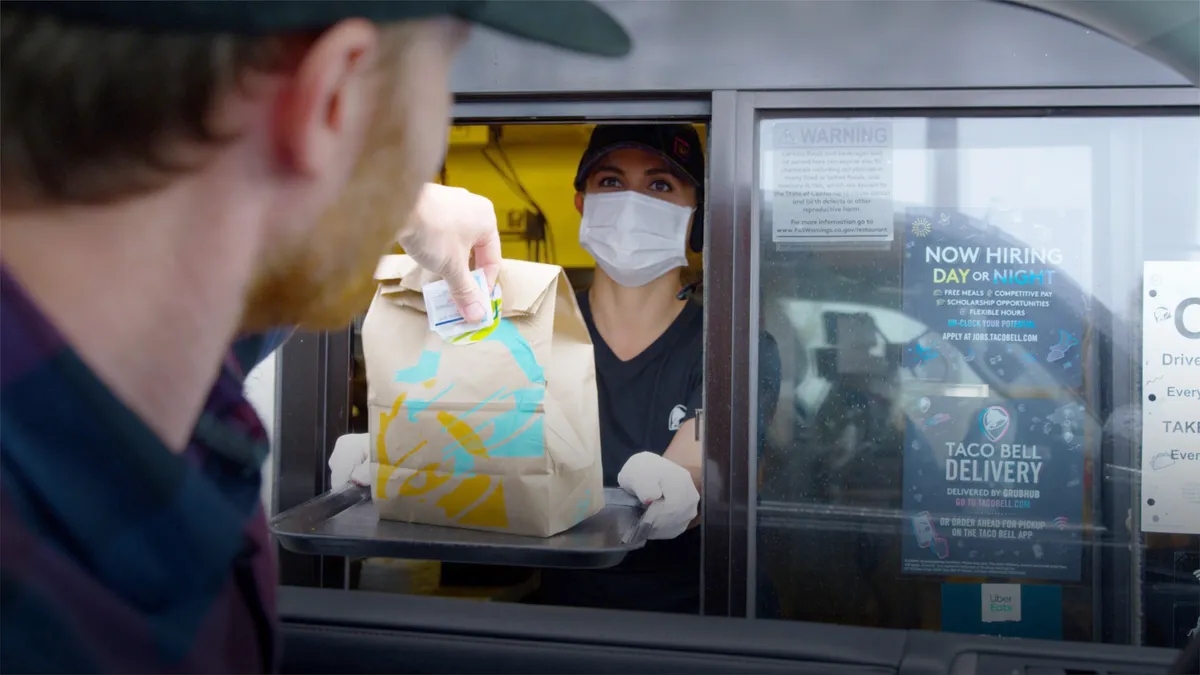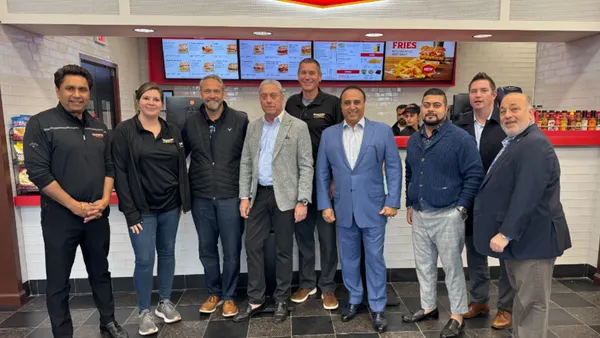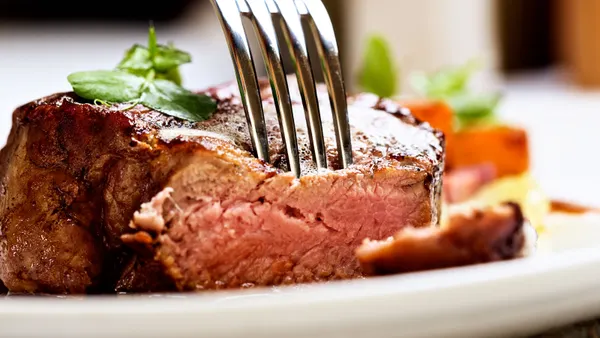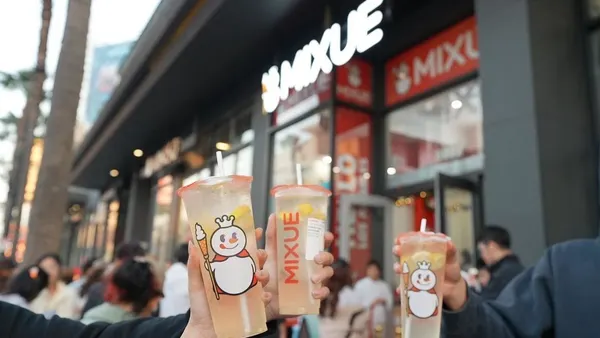Dive Brief:
- An annual drive-thru study released by SeeLevel HX finds that speed of service in the quick-service segment has slowed by nearly 26 seconds year-over-year, from 356.80 seconds in 2020 to 382.39 seconds in 2021. Ten major restaurant brands and nearly 1,500 drive-thrus were tested for the study.
- Order accuracy also declined this year, with inaccuracies for 15% of all orders in 2021 versus 13% in 2020. Inaccurate orders took over a minute longer (71.06 seconds) to fulfill than accurate orders, per the study.
- In a statement, SeeLevel HX CEO Lisa van Kesteren attributes these trends to the tight restaurant labor market, supply chain challenges and inflation.
Dive Insight:
Restaurants have also faced higher volumes at the drive-thru throughout the pandemic, which could be contributing to slower wait times. When dining rooms were closed during the early months of the COVID-19 outbreak, close to 90% of McDonald's business came through the drive-thru window. According to The NPD Group, drive-thru volume hasn't fallen with the reopening of dining rooms. In August, drive-thru visits rose by 11% versus August 2019, while dine-in visits were down 34%.
Long drive-thru times can deter customers. Chick-fil-A's CEO recently told The Atlanta Business Chronicle 30% of its customers drive away because the chain's drive-thru lines are so long. But a recent study conducted by QSR Magazine found that guests are willing to spend a little more time in the drive-thru lane than they were in 2020.
According to research from TD Bank, 38% of franchisees created a more limited menu to support drive-thru operations, while 38% added drive-thru capabilities. But some chains are expanding their menus after a pared down 2020. McDonald's started bringing back items last summer as some regions reopened, while Taco Bell recently announced it's bringing back breakfast.
Several chains, including Wendy's, Taco Bell, KFC, McDonald's and Burger King, have added more drive-thru lanes or drive-thru-only units to meet higher demand and speed needs at the channel. Even chains that didn't have a major drive-thru presence prior to the pandemic, such as Panera and Shake Shack, are adding lanes.
Some restaurants are also implementing technology at the channel explicitly to speed things up. Taco Bell is adding digital check-in screens, for example, while Burger King is experimenting with conveyor belts. McDonald's is testing voice ordering technology, which yields 85% order accuracy. SeeLevel HX's study found drive-thrus with order confirmation boards are faster on average by 34 seconds. Such technology could help alleviate labor-induced speed and accuracy woes as drive-thru business remains elevated.
In addition to technological investments, some chains are redistributing their hours and labor to improve their drive-thru times.
"To prevent brand vulnerability, restaurants would be better served by compromising in some areas in order to consistently deliver a rewarding drive-thru experience," van Kesteren said in the release. "We're already seeing this with the top QSRs limiting indoor dining and reducing store hours."









